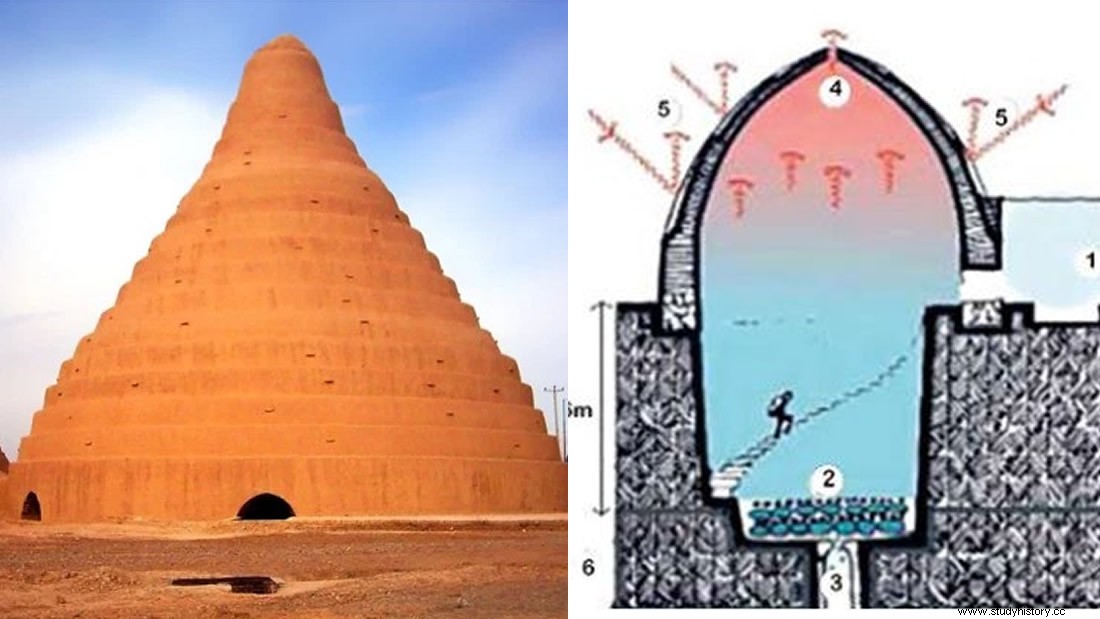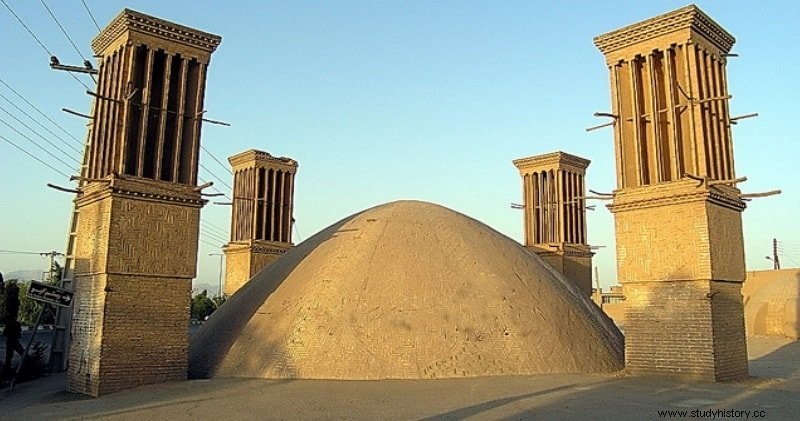In the early 20th century, high temperatures and humidity threatened the reputation of Sackett-Wilhelms Lithographic and Publishing company's color printing work. from Brooklyn, New York. Bulging of the paper and improper drying of the inks were responsible for the blurry prints that ruined the entire job and increased production costs. So in 1902 they commissioned the Buffalo Forge Company (Buffalo, New York) the task of solving that problem, and it entrusted the work to Willis H. Carrier, a young 25-year-old engineer who had already designed projects for heating and dehumidification installations. That same year, the U.S. patent was registered. No. 80,897, entitled Air Treating Apparatus and assigned to Carrier and Buffalo Forge Company , an invention that allowed temperature and humidity control, modern air conditioning.
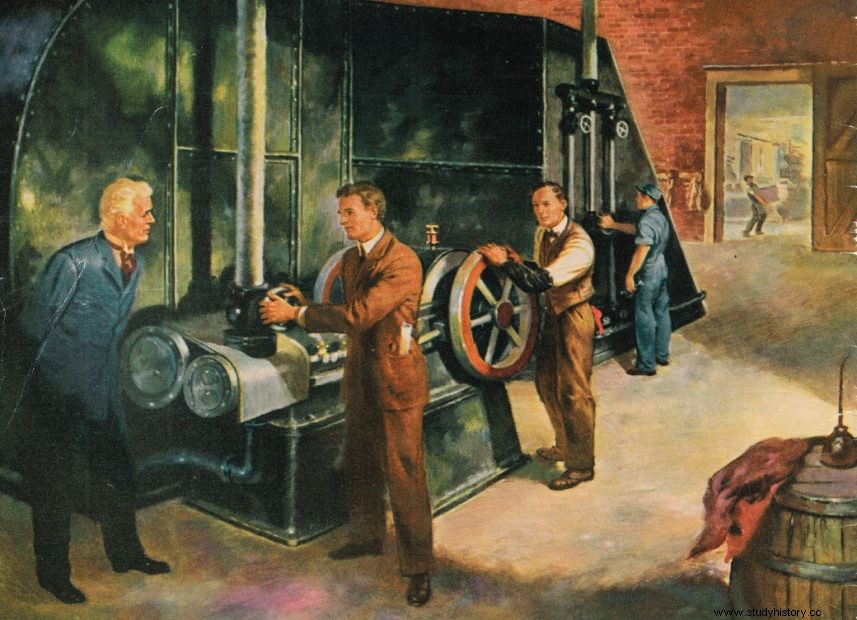
Invention of Willis Carrier (1902)
And what was air conditioning like in ancient times?
At sunset, the Egyptians placed reed or palm mats soaked in water at the windows, and on them a small container with holes that dripped water to keep them moist. The warm breeze at night produced evaporation and cooled the interior of the house, as well as increasing the humidity in the air, which was much appreciated in these climates.
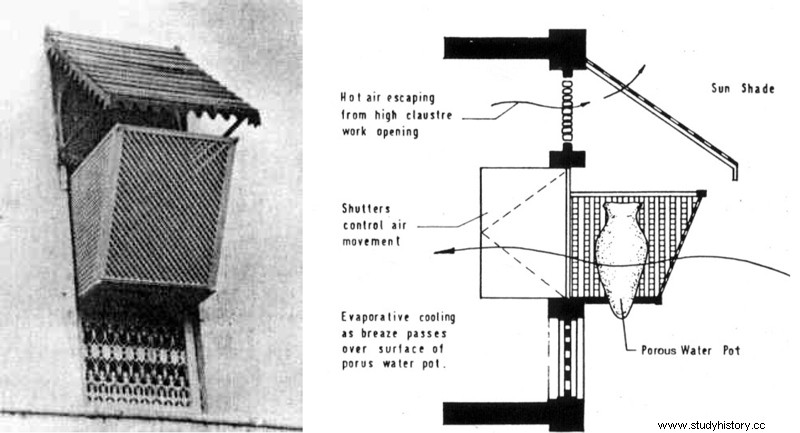
And what do you think if I tell you that to this day, in rural areas of Iran, the same air conditioning system is still used as that of the Persians in 400 BC? We are talking about the wind catchers or wind towers (in Persian, badgir ). Although it seems that the Persians did not invent it -remains of older structures of this type have been found in India and Egypt-, they have been the ones who have maintained these air conditioning systems to this day. A representative example is in Yazd, a city surrounded by the desert in the heart of Iran, with a very dry climate and temperatures that fluctuate considerably between day and night, reaching over 40° in summer.
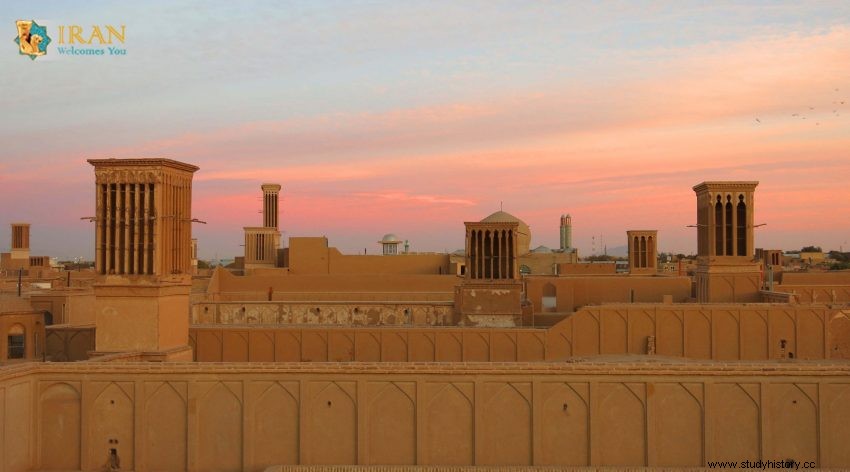
Yazd, one of the oldest cities in Iran
In addition to building buildings with very thick adobe walls, which provide thermal insulation and cushion the temperature variations between day and night, the badgirs -the tall structures, similar to chimneys, that protrude from the roofs (see photo)- manage to lower the interior temperature by up to 10º. Although there are hexagonal and octagonal ones, most of these wind catchers are rectangular in shape, with inlets on each of the four sides to catch the wind wherever it blows from. And its mechanism is very simple:cool wind is “captured” at the top of the tower and directed down through the narrow, vertical slots, pushing warm air inside the buildings up and out. through an opening on the opposite side of the wind catcher. Even in the absence of a breeze, wind catchers work like solar chimneys, creating a pressure gradient that pushes hot air up and out through the tower, leaving the inside of the house cooler than the outside. /P>
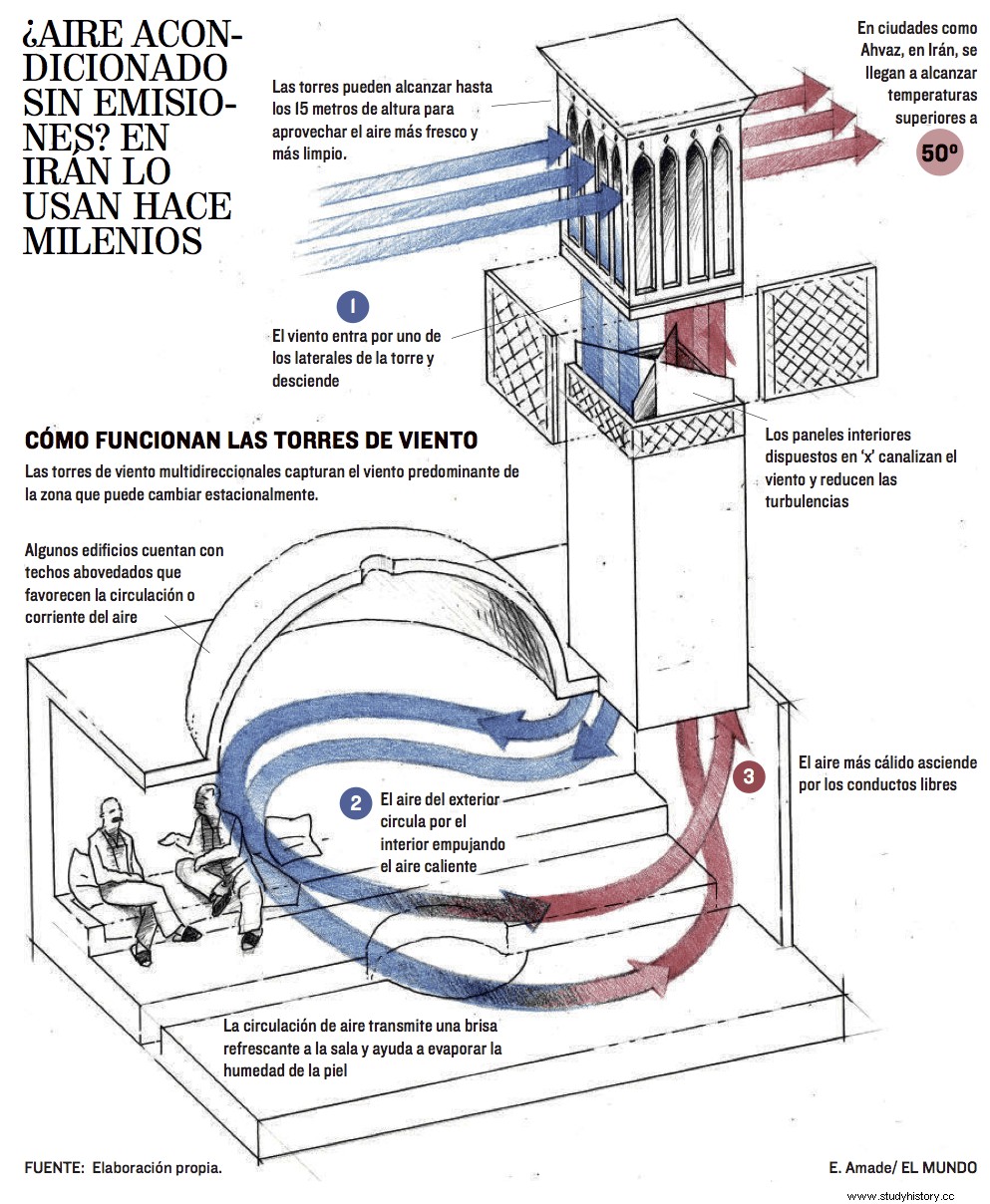
And if we add a qanat , we can have a basement where we can have a sorbet (from the Italian sorbetto and this, in turn, from the Arabic šarbah ). The qanats They are underground tunnels that carry subsoil water from the mountainous areas to the towns, both for consumption and to irrigate the fields. The construction of the qanat it began with the excavation of a vertical well (mother well) to a known aquifer. Upon reaching the water source, the horizontal drilling of the slightly inclined tunnel began and the water flowed by the effect of gravity without the need to be pumped. Every certain distance, a new well was dug from the surface to have access to water, guarantee ventilation, be able to remove excess soil and carry out maintenance tasks.
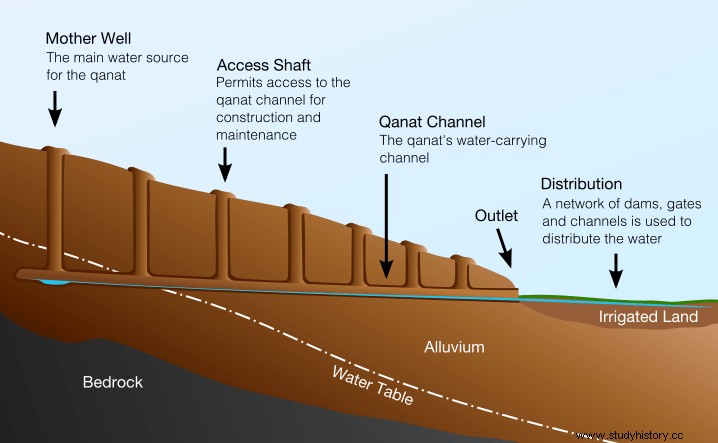
Qanat
If a qanat passes under the floor of the house in question , to the air that descends from the tower is added the air that enters through the well and that has been cooled and moistened by the water current, increasing the cooling power.
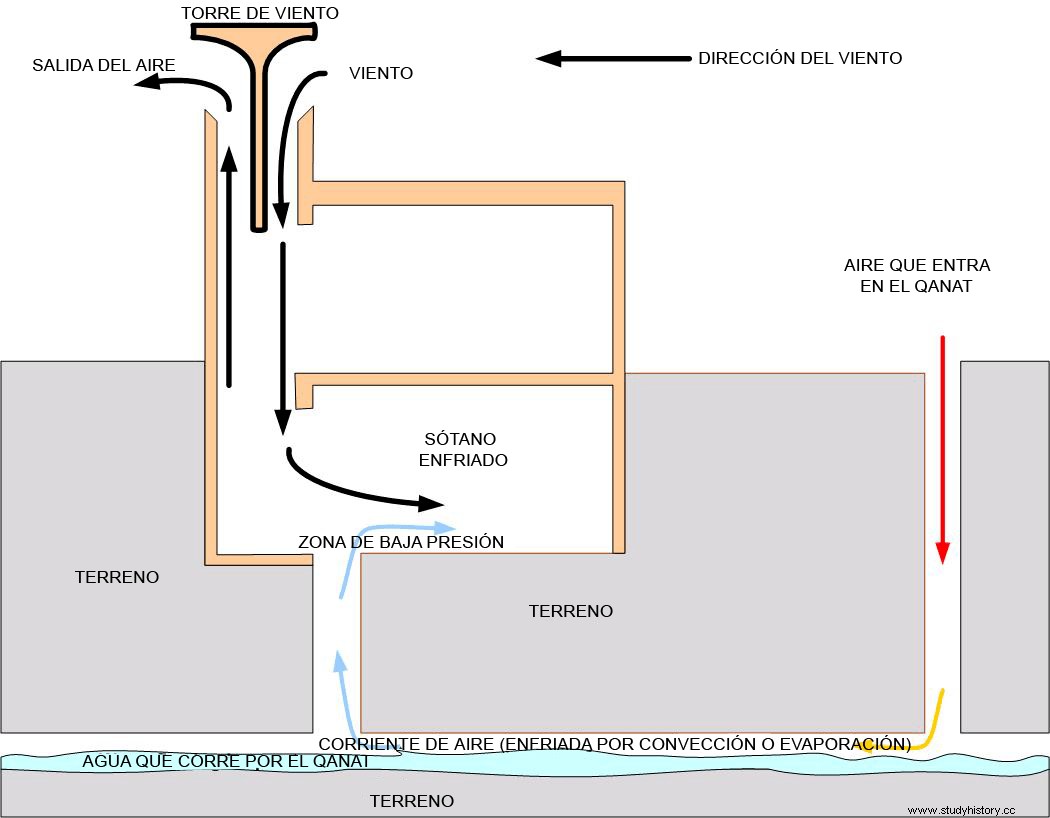
And don't leave yet, there's more... the Yakhchal , a giant fridge. The procedure for artificially producing ice, with some slight variation, was the same in China, Egypt, India, and other ancient peoples. During the winter nights, water was poured into a kind of well with a large surface area but a shallow depth—about fifty centimeters—and lined with straw. The cold of the night, the dry air, the large surface of water exposed to evaporation, the shallow depth and the straw that prevents the conduction of heat from the land that is warmer, facilitates evaporation and the formation on the surface of thin layers of ice. Under favorable conditions of night cooling and dryness in the environment, the water can become real blocks of ice. Now that we have the ice, how do we keep it in a desert climate during the summer? Well, with the Yakhchal (literally, "ice well").
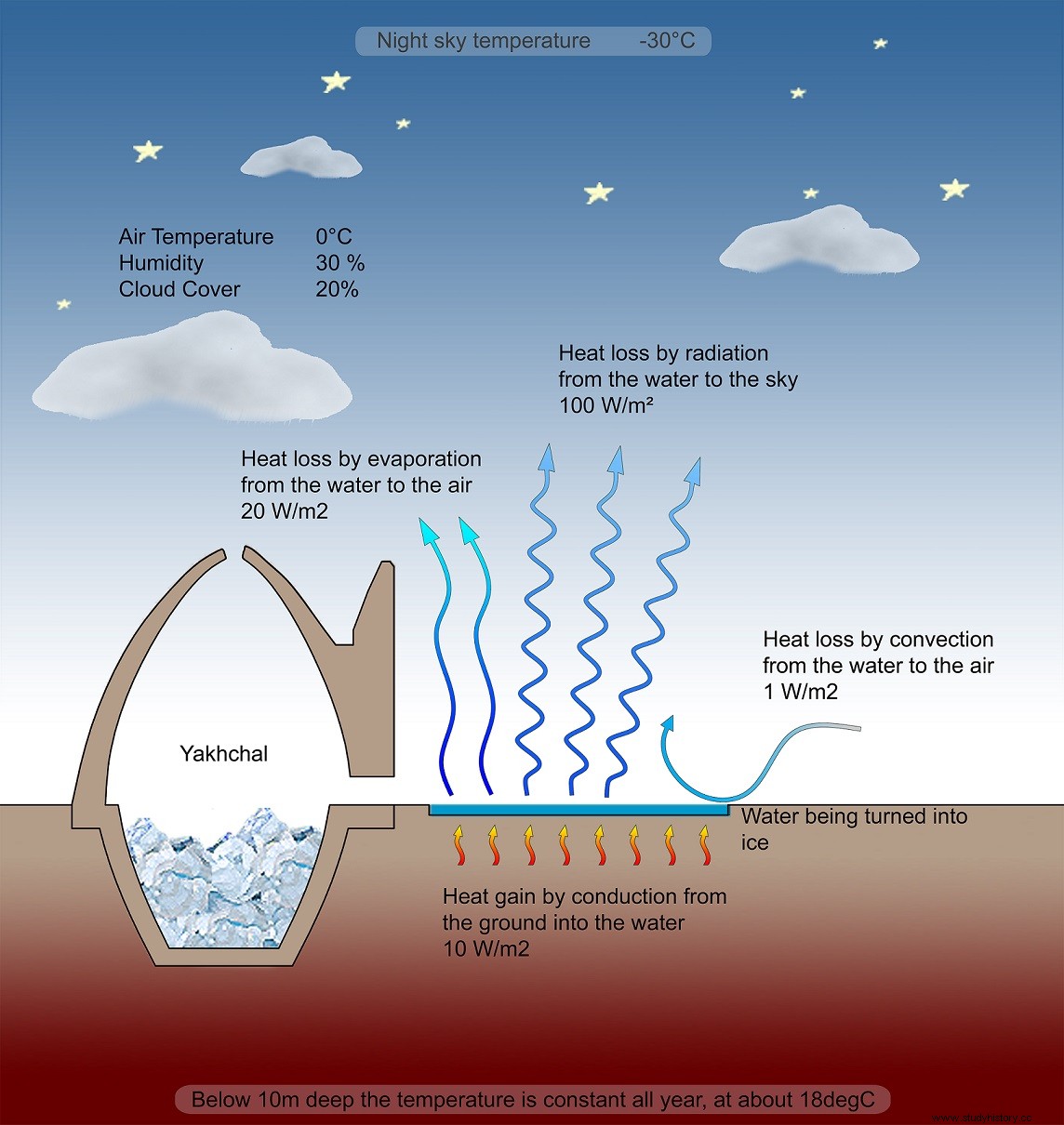
The Yakhchal It is a dome-shaped adobe construction with thick walls —up to two meters at its base— and a height of more than ten meters. The dome is built on a pit in which a well has been dug, where the ice will be placed. The well in question is lined with a mortar called sarooj (sand, clay, egg whites, lemon, goat hair and ash) that provides total insulation to the ice. The very construction of the Yakhchal, with small holes in its structure and a larger one on top, underground water currents and even, on some occasions, several badgirs around, they are able to keep ice and preserve perishable foods.
